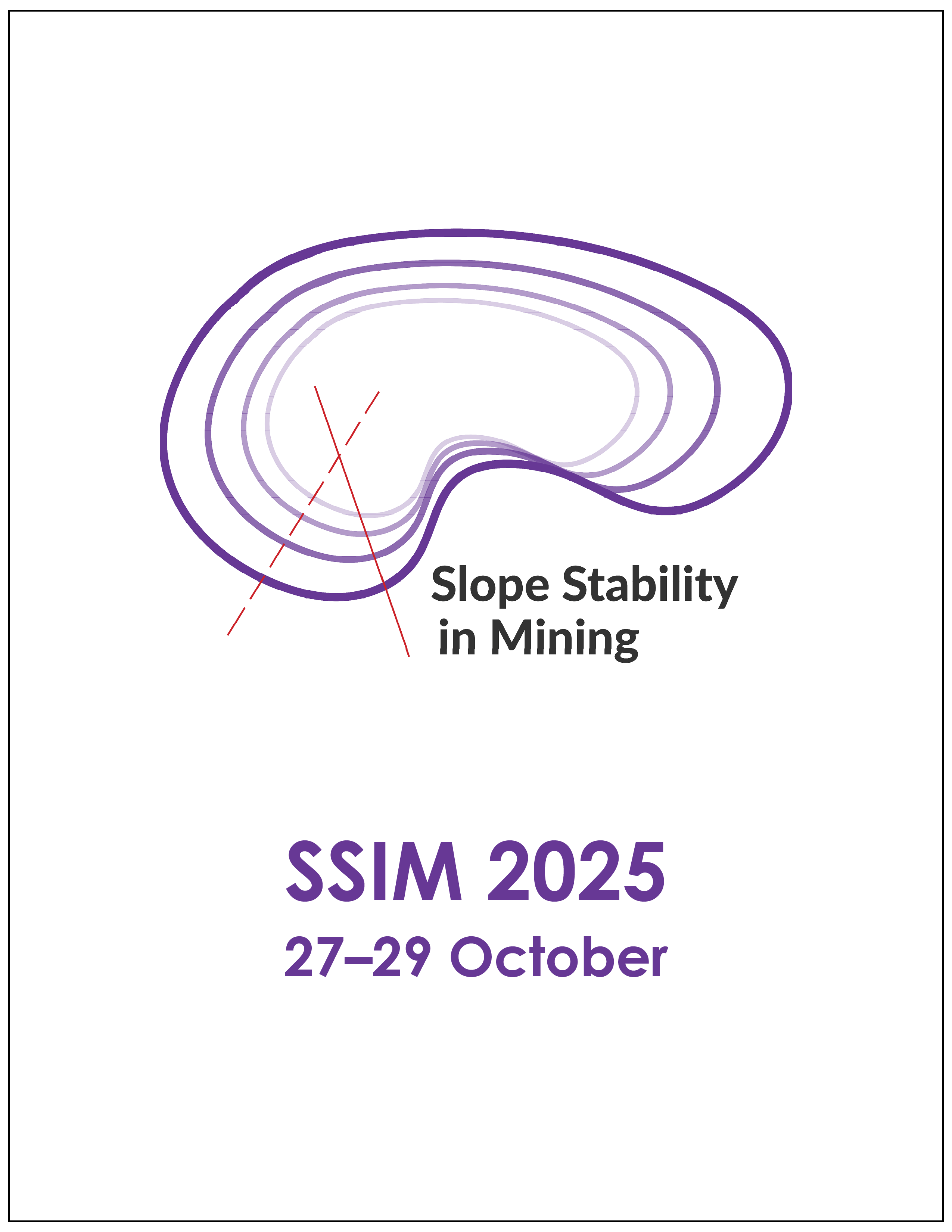Impacts of geotechnical characterisation on stability analyses: a case study in a Chilean open pit mine

|
Authors: Basáez-Barrios, L; Marambio, E; Ortiz, R |
DOI https://doi.org/10.36487/ACG_repo/2535_44
Cite As:
Basáez-Barrios, L, Marambio, E & Ortiz, R 2025, 'Impacts of geotechnical characterisation on stability analyses: a case study in a Chilean open pit mine', in JJ Potter & J Wesseloo (eds), SSIM 2025: Fourth International Slope Stability in Mining Conference, Australian Centre for Geomechanics, Perth, https://doi.org/10.36487/ACG_repo/2535_44
Abstract:
Geotechnical characterisation aims to subdivide the rock mass into domains with similar geotechnical properties, for which classification systems such as the Rock Mass Rating (Bieniawski 1973), Q-system (Barton et al. 1974) and geological strength index (GSI) (Hoek 1994; Hoek & Brown 1997) have been developed. One common methodology for estimating geotechnical parameters involves creating a geostatistical model based on surface and drillcore mapping, which can lead to overestimations or underestimations due to limited spatial data, resulting in higher uncertainty. Another approach could be to assume homogeneity within defined geotechnical domains and subdivide them as more data becomes available, but this can lead to reliability issues if the more heterogeneous units are under sampled. The chosen approach impacts stability analyses, even when dealing with the same rock mass. A rock mass quality model with low reliability results in an excessively conservative or, conversely, overly optimistic analysis. With uncertainty, a more conservative analysis is typically chosen. This paper presents, as a case study, an approach used for representing rock mass parameters applied to the numerical stability analysis of an open pit mine located in Chile, addressing the difficulties encountered and the mitigation measures applied for each methodology to estimate the GSI. The results validate the approach currently implemented, which is based on deterministic modelling of a separate poor-quality domain using variables captured by drilling (rock quality designation), alteration, lithology, structure mapping). This approach has provided a higher level of reliability in predicting poor-quality areas and, consequently, a reduction in the uncertainty of future scenarios.
Keywords: geotechnical characterisation, rock mass quality, slope stability, numerical modelling
References:
Barton, N, Lien, R & Lunde, J 1974, ‘Engineering classification of rock masses for the design of tunnel support’, Rock Mechanics,
Bieniawski, ZT 1973, ‘Engineering classification of jointed rock masses’, Transactions of the South African Institution of Civil Engineers, vol. 15, pp. 335–344.
Chilès, J-P & Delfiner, P 2012, Geostatistics: Modeling spatial uncertainty, 2nd edn, Wiley, Hoboken.
Dawson, EM, Roth, WH & Drescher, A 1999, ‘Slope stability analysis by strength reduction’, Geotechnique, vol. 49, no. 6, pp. 835–840.
Deere, DU 1964, ‘Technical description of rock cores for engineering purposes’, Proceedings of the 1st Rock Mechanics and Engineering Geology Conference, University of Illinois, Urbana.
Hoek, E 1994, ‘Strength of rock and rock masses’, 1st International Congress on Rock Mechanics, International Society for Rock Mechanics, Lisbon.
Hoek, E & Brown, ET 1997, Practical estimates of rock mass strength, International Journal of Rock Mechanics and Mining Sciences, vol. 34, no. 8, pp. 1165–1186,
ITASCA 2024, 3DEC 7.0, version 161, computer software, Itasca Consulting Group, Inc, Minneapolis.
© Copyright 2025, Australian Centre for Geomechanics (ACG), The University of Western Australia. All rights reserved.
View copyright/legal information
Please direct any queries or error reports to repository-acg@uwa.edu.au
View copyright/legal information
Please direct any queries or error reports to repository-acg@uwa.edu.au

